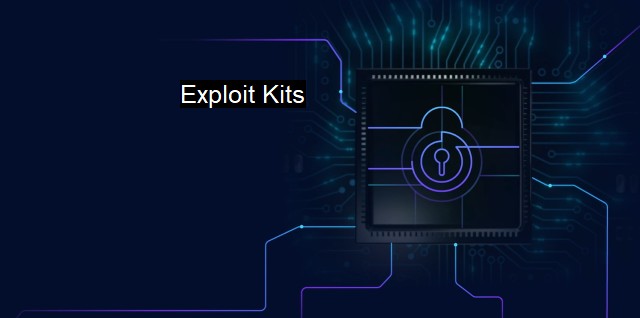What are Exploit Kits?
The Menace of Exploit Kits in the Era of Digital Insecurities: An Insight into the Clever and Efficient Toolkits Challenging Cybersecurity
Exploit Kits play a crucial role in digital pathology, particularly in cybersecurity incidents. Primarily designed to exploit vulnerabilities in popular software applications, Exploit Kits enable unauthorized access to a system, paving the way for further malicious activities like data theft, destruction, or ransomware installation.An Exploit Kit constitutes a type of malicious tool used by cybercriminals to attack system vulnerabilities. It is generally automated and comprises various exploits to infiltrate infrastructure defects. The typical perspective views Exploit Kits as software packages, complete with pre-written exploit codes for known vulnerabilities. Their operations may include exploiting browser flaws to install digital monitoring tools, infect computers with ransomware, or create botnets.
Although different types throughout the years have had slight variations, most Exploit Kits tend to follow a similar modus operandi. First, traffic is usually directed towards a landing page, often done using a process called malvertising (spreading malware through online advertising). From there, the landing page will investigate the visitor's software setup, quickly locating outdated software versions or software vulnerabilities. Following the findings, the Exploit Kit presents a specifically-profiled, tailor-made exploit, which probes the software weakness, enabling the attacker to infiltrate the system or network.
The process is reliably swift and almost undetectable, often running in the background unnoticed by the system user. a user might unknowingly get redirected from a traditional site to an exploit landing page via malvertising. Here, their system specifications are scanned, vulnerabilities noted, with an exploit subsequently launched – all potentially within seconds and likely invisible to the user.
Software targeted by Exploit Kits usually is commonly used applications, as cybercriminals skillfully leverage these programs to maximize their nefarious influence. Flash and Java have historically been particularly affected, with modern attack patterns see increased targeting of browser vulnerabilities.
Professionally-programmed Exploit Kits are readily available within dark Web communities, available for rent or purchase, promoting the commercialization of cybercrime. As a service provider, the Exploit Kit can provide detailed post-attack analysis, thesis tracking, and even technical support - distinctly illustrating the institutionalization of cybercrime.
While devastatingly effective, the wider adoption of robust antivirus applications and more consistent software updating practices sees a decrease in widespread exploit kit effectiveness. Antivirus applications play a significant part in tackling these kits. Harnessing advanced heuristics, traditional signature detection, and behavior blocking technology, these tools can detect and remove these dangerous exploit programs. these operations can proactively prevent potential cyber attacks, negating malicious payload downloads or warning of suspicious systems behavior.
Consistent and thorough software updates offer potent defense mechanisms. Most software upgrades carry fixes or patches for known vulnerabilities, reducing the available variety Exploit Kit operators can target. maintaining an updated software environment relieves some dependence on antivirus detection, making systems inherently safer.
The constant battle between cyber protection measures and Exploit Kits continues. Amid contemporary challenges, new strains continually surface, adapting in response to growing cybersecurity measures. Noteworthy is that Exploit Kits growth often aligns with disclosure of previously unsuspected software vulnerabilities, widely seen during regular software updates. Hence, cybersecurity responders must remain vigilant, agile, and unerringly studious in understanding, predicting, and negating an evolving digital threat landscape.
Considering the institutional sophistication of exploit kit programming and consequent rates of successful infiltration, this remains a threat worth continuous academic understand, highly-trained response units, and strong public awareness. The cyber hygiene policies encouraging thorough antivirus use alongside constant software updates present reliable remedies; understanding the issue is the first step to better digital health.
Exploit Kits are an eminent digital menace, necessitating protective approaches from all digital users, systems administrators, and software developers. Each newly reported violation or found-vulnerability educates attackers, whilst also providing learnings for proper future protection implementation. Crux is the continual development of new defenses, constant software updating, and consistent application of sturdy antivirus tools to maintain a strong defense front against Exploit Kits.

Exploit Kits FAQs
What are exploit kits?
Exploit kits are software packages that contain pre-written code designed to exploit vulnerabilities in computer software. They are used by cybercriminals to gain unauthorized access to computer systems and to install malware on those systems.How do exploit kits work?
Exploit kits work by scanning vulnerable computer systems for weaknesses and then launching attacks that take advantage of those weaknesses. Once an exploit is successful, the kit can download and install malware on the targeted system.What kind of vulnerabilities do exploit kits target?
Exploit kits target a range of vulnerabilities, including those in popular web browsers, plugins, and operating systems. These kits often target known vulnerabilities for which there is no patch available, making them particularly dangerous.How can I protect my computer from exploit kits?
To protect your computer from exploit kits, it is important to keep all software on your computer up to date with the latest patches and updates. Additionally, it is recommended to use a reputable antivirus software that can detect and block exploit kits. It is also important to avoid visiting websites that are known to distribute malware.| | A | | | B | | | C | | | D | | | E | | | F | | | G | | | H | | | I | | | J | | | K | | | L | | | M | |
| | N | | | O | | | P | | | Q | | | R | | | S | | | T | | | U | | | V | | | W | | | X | | | Y | | | Z | |
| | 1 | | | 2 | | | 3 | | | 4 | | | 7 | | | 8 | | |||||||